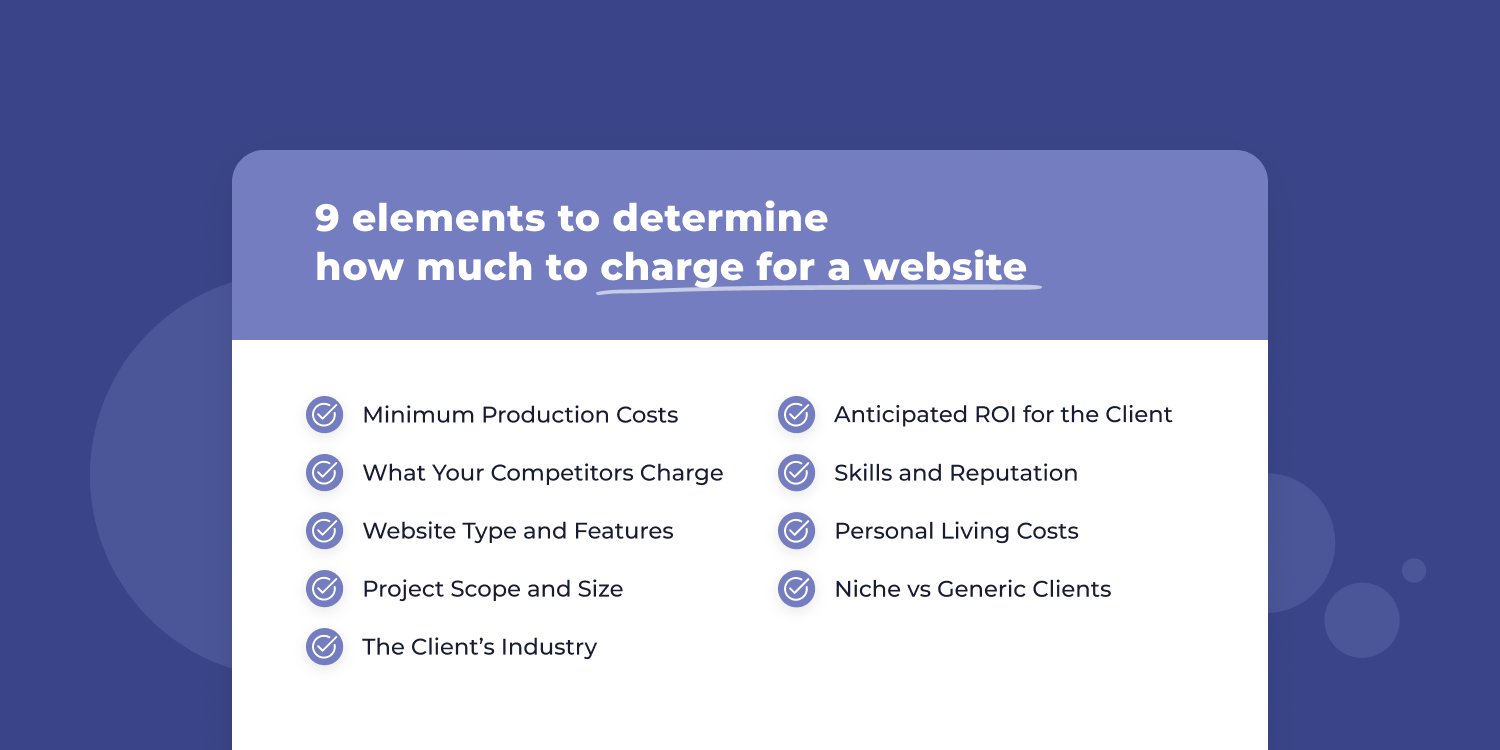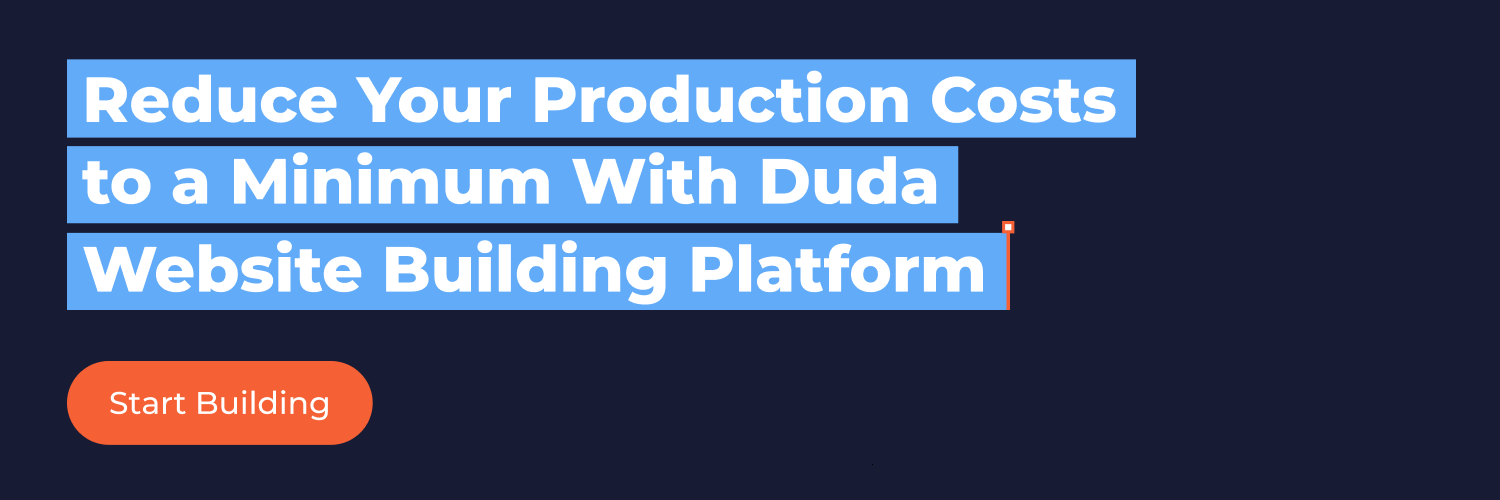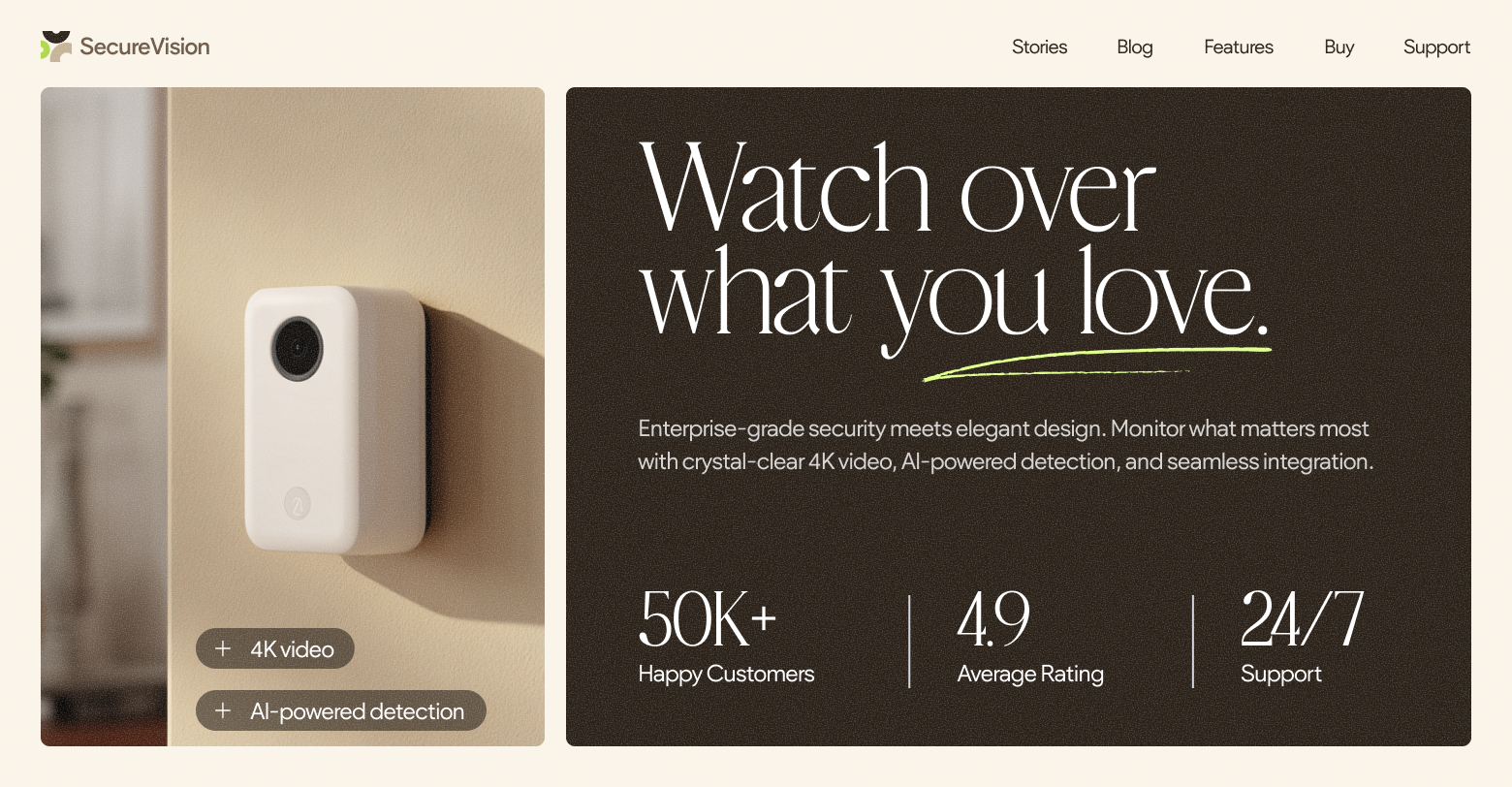The average agency or freelancer price point for building a website spans a large range between
$12,000 and $150,000. The reason for such a wide range of values stems from the various elements that influence the cost (more on those elements later).
Let’s now take a look at the different cost structures that agencies use when charging clients for websites.
Hourly
Hourly pricing means you bill the client for all hours spent working on the design of the website. This is quite a useful pricing structure in the sense that it reflects the varying nature of how long each web design project takes. However, a valid criticism of this approach is that it rewards sluggishness and disincentivizes efficiencies.
While the prospect of being rewarded for sluggishness sounds kind of nice in theory, the practical reality is that web design agencies should always be tweaking their operations to become more efficient. Sloth-like processes eventually repel clients and damage an agency’s reputation.
Flat Fee
A flat fee establishes a price for the entire project at the outset as agreed upon by you and the client. From an agency perspective, this cost structure works well when you tend to accurately estimate the time and resources needed for projects. And if you continually strive to improve your processes, such as by using a professional
website builder, you’ll often end up completing projects faster, which works out more profitably. A disadvantage is that underestimating the complexity of a project may result in charging too little.
Yearly
For most web design agencies, building relationships and recurring income sources beyond the initial website design paves the way for long-term growth. A yearly retainer fee typically includes a website along with additional services, such as annual maintenance, redesigns or refreshes,
SEO audits, SSL certificate renewal, and more. A yearly engagement is a good option for service-based businesses that might only need to update their website infrequently.
Monthly
A monthly retainer fee is another great way to build up recurring revenue sources. You bill clients each month and package other services with the website design, such as ongoing SEO optimizations, hosting management, and general website maintenance. Monthly fees better suit websites that clients need to regularly update to stay competitive and functional, such as eCommerce.
It’s worth noting that you are not bound to a particular pricing structure; you can and should change things up as your agency evolves. Consider starting with an hourly pricing model and taking things from there. If you’re more established, find other ways to add value to clients and trend towards recurring pricing models.
Specific niche expertise provides a solid justification for flat project fees. For example, if you excel at and are experienced with designing websites for companies selling inflatable swimming pool toys, you’ll likely have an in-depth understanding of how long such projects take. You’ll run way less risk of underpricing each fee.
2. What Your Competitors Charge
The current web design marketplace is a great place to gauge what other agencies charge for similar work. The word
similar here is pretty important—don’t just base your rate on the first few results you see on Fiverr or Upwork. The freelancers or even small agencies advertising on there might be working on vastly different projects than what you plan to.
If you design websites for cybersecurity companies, then find other agencies in that space and see what they charge. Many agencies will be upfront about typical prices for building a website. If you’re more of a generalist and enjoy applying your skills to multiple kinds of businesses and industries, then comparisons with agencies or freelancers doing the same are more appropriate.
Delving into the prevailing market rates doesn’t mean you need to exactly mirror what your competitors charge. But these rates do provide a useful ballpark estimate of what your target clients are willing to pay.
3. Website Type and Features
Even if you attempt to specialize in web design for one particular kind of client or sector, it’s common for clients to want vastly different things. These differences become more pronounced when you’re not picky about the clients you work with.
Some companies might just want a basic five-page website that highlights their services and looks professional, maybe with a blog section. Others could desire extra features, such as event management, advanced contact forms, paywall sections, or online stores with hundreds of product pages.
The more extra features or pages the client needs, the more time it takes to finish the job, which justifies charging a higher price. Furthermore, extra features might call for purchasing
additional tools that integrate with the CMS or website building platform you work with.
4. Project Scope and Size
Project scope and size is a factor that differs slightly from website type and features when determining how much to charge for a website. Some clients might come to you wanting a website
custom-built from scratch and others might just want a website redesign. These are inherently different-sized projects that command different fees.
The scope is also important to clarify because it’s common to encounter clients who make several revision requests as the project develops. This is where you can get burned with a flat project fee if you don’t account for potential changes in scope with a written contract that stipulates an extra fee. With other pricing structures, you can simply increase the rate as the scope changes.
5. The Client’s Industry
The industry in which clients operate plays a role in the money they’re willing to spend on web design. Media publishers, technology companies, and healthcare businesses need a strong web presence and aren’t shy about shelling out for features and professional designs. Other industries like education, hospitality, or restaurants usually come with lower budgets. There are of course differences within industries where you might see startups wanting just a basic website while enterprises look for something far more complex and rich in features.
6. Anticipated ROI for the Client
Factoring in the client’s anticipated ROI is an important and often overlooked element in calculating how much to charge for a website. If you’re just starting out in web design, it’s easy to develop a mindset that underestimates the value of what you do. After all, there are hundreds of millions of active websites on the Internet, so designing a professional website is no big deal, right?... Wrong.
You don’t have to dive too far into the depths of Google’s search results to find badly designed or poorly performing websites. If you commit to truly excelling, you increase the expected return for your clients’ investments. After all, a high-quality website that helps a business achieve its goals promises long-term returns.
Offer clients more value by upselling other services (e.g. SEO) or promising excellent
core web vitals scores. You can then charge more because the clients ultimately drive more revenue/success thanks to your skills and work.
7. Skills and Reputation
Speaking of skills, part of the reason for such a large variance in website prices comes down to widely differing skill sets and levels of experience in the world of web design. If you’re new to the world of web design then you’ll probably have to bite the bullet and charge lower rates, at least until your agency develops a reputation for stellar work and you have a portfolio to display.
Don’t shy away from revealing any specific certifications, courses, or degrees that arm you with web design skills. Even websites you’ve worked on personally for fun add credence to your abilities so include them in your portfolio (as long as they look great and work well).
As your reputation grows and your knowledge increases, you can naturally justify charging higher rates. Landing a big-name client and doing a good job is another milestone that increases stature and vindicates a rate increase (even if that client is only a big name inside a particular industry or sector).
8. Personal Living Costs
Personal living costs are unique to different agency founders and freelancers, but they do obviously play an important role in the prices you charge. A frugal childless twentysomething renting a one-bed apartment doesn’t need to make the same amount of money as a fortysomething living in a three-bed suburban home with two kids to feed.
One of the great attractions of website design is that you can start an agency from anywhere and market your services to the whole world via the Internet. This level of location independence sees reputable agencies pop up in all corners of the planet.
Geographical arbitrage can let you take advantage of lower costs of living in certain parts of the world while selling web design services to companies in developed nations. If this is your scenario, consider charging a slightly lower price to compete for business.
Whatever your own situation, if you calculate your monthly personal expenses and your income from web design doesn’t exceed them, you’re not charging enough.
9. Niche vs Generic Clients
Many agencies try to provide web design services to any client irrespective of the company’s industry. While selling to everyone is a good way to get exposure to different projects, it’s not necessarily the best way to earn the big bucks, at least not when starting out.
A good tip is to focus on solving website problems for a specific subset of businesses in one kind of industry. Or, to borrow a favorite phrase of many Internet marketing gurus: pick a niche! When you niche down in who you build websites for, you become known as the go-to agency for that small section of clients. Those clients will be willing to pay more for your services versus a generalist agency that perhaps isn’t familiar with expectations around messaging or branding in that niche.














